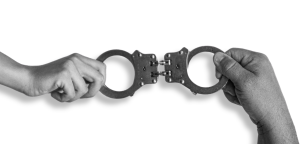The affliction of addiction
April 20, 2016
It all began in 5th grade, whether it was in D.A.R.E. or I Can, when students pledged not to do drugs or not to drink. Students thought the programs were silly because that would never be them. But take a look around LHS and that is not a reality; the promise has been broken too many times to count, 90 percent of Americans with a substance abuse problem started smoking, drinking or using other drugs before age 18.
There is definitely a stereotype that comes to mind when one thinks of kids who use drugs and alcohol in high school: a little rough around the edges, baggy clothes, strange odor and lack of motivation. Yet, there are more kids in there that participate in this phenomenon than one would think. By the 8th grade, 28 percent of adolescents have consumed alcohol, 15 percent have smoked cigarettes, and 16.5 percent have used marijuana. Although, it is hard to say that this many kids are addicted, there is a surprising amount of students, even those who seem like the perfect child, who do drugs and drink outside of school.
“There have been times when we have been genuinely surprised by a student that we’ve caught with marijuana in their possession,” said Officer Jason Larsen. “I can’t say that it’s specific to one demographic.”
At LHS it seems that the trend of drug and alcohol use has not changed much in recent years. The most common drug used has always been marijuana, and that is what it continues to be as the high school perception of harm has decreased. In fact, 60 percent of seniors do not see regular marijuana use as harmful even though the THC is nearly five times stronger than it was 20 years ago. There are times throughout the school day when staff members and students sense an odor coming from a kid and are able to identify it as marijuana or another drug.
“I’m in my 6th year here at Lincoln and marijuana is still leading the charge by far,” said Officer Larsen.
Alcohol is also right up there as the most common substance used because of its accessibility. Most houses have some type of alcohol stuck in a cupboard somewhere. It has become so easy for students to get a hold of and has turned into just another recreational activity to do with friends.
“Alcohol is still presumably common because it is so easy to get,” said Officer Draeger.
Alcohol consumption and drug use has become somewhat of a norm these days in high school. Substance abuse is harmful not only to the one consuming the substance but also to those around them. Dealing with addiction can be very emotionally draining on some. Kacee Redden, the Students Against Destructive Decisions instructor at LHS, spends her time talking to not only those who partake in this “activity” but also to those that are dealing with a family member or friend who struggles with addiction or spends their time outside of school making poor decisions.
“I am here as a resource to help deal with some of those stressful situations, like being pressured into using substances,” said Redden.
Redden would prefer to have students come to her as someone they can confide in. There are many different ways to deal with substance abuse and addiction because of the many factors that are involved in these situations. The three main factors are environmental, social and genetic. Environmental and social factors deal with someone who is surrounded by substances and also the dynamic at home. Some people are placed with the burden of genetic addiction, when addiction runs in the family and is extremely hard to break away from. It all comes down to choices and whether people see their future as more important or if nights away from reality in high school take priority.
“The biggest thing I learned from this population is that no one is a bad person,” said Redden. “They just make bad decisions sometimes. We are all human and make mistakes.”
Statistics taken from Kacee Redden, LHS SADD instructor








